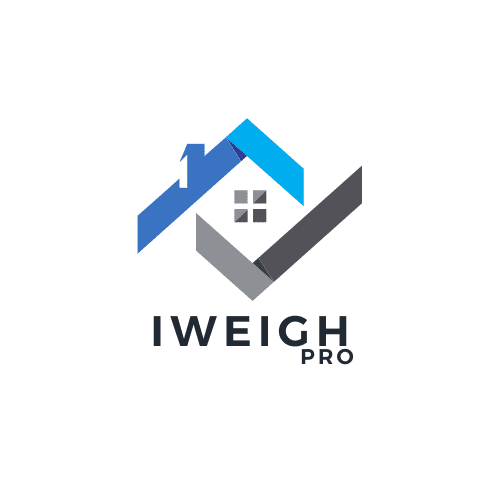Vegetable Gardening Website:
Welcome to the world of vegetable gardening! If you have a green thumb or are eager to learn, this Vegetable Gardening Website is your go-to resource. Whether you have a small backyard or simply a windowsill, we’ve got you covered with tips, tricks, and expert advice.
Growing your own vegetables is not only rewarding but also a great way to connect with nature and promote healthy eating habits. On this website, you’ll find step-by-step guides on everything from selecting the right seeds and preparing your soil to nurturing your plants and harvesting a bountiful crop.
So, whether you’re a seasoned gardener or just starting out, get ready to dig in and discover the joys of vegetable gardening. We’re here to inspire and empower you on your journey to a greener thumb and a more sustainable lifestyle. Let’s get growing together!

The Importance of a Vegetable Gardening Website for Green Thumbs
Are you a passionate gardener looking for a way to share your knowledge and connect with other like-minded individuals? A vegetable gardening website may be just what you need. In this digital age, having an online presence can help you reach a wider audience, provide valuable information, and foster a sense of community among gardening enthusiasts. Whether you’re a seasoned gardener or just starting out, a vegetable gardening website can be an invaluable tool in your horticultural journey.
Building Your Online Oasis: Creating a Vegetable Gardening Website
Sprouting with ideas and ready to dig in? Let’s explore the essential steps to create a successful vegetable gardening website that will cultivate a flourishing online community.
Picking the Perfect Plot: Choosing a Domain and Hosting Provider
Just as a garden needs a fertile soil, your vegetable gardening website needs a domain name and hosting provider. Select a domain name that reflects the essence of your website and is easy to remember. Look for a reliable hosting provider that offers affordable plans and ensures your website’s smooth functioning.
Cultivating Engaging Content: Creating Informative and Entertaining Articles
Content is the lifeblood of your vegetable gardening website. Offer a variety of articles that cater to different gardening interests and skill levels. From how-to guides and plant profiles to troubleshooting tips and success stories, provide valuable and engaging content that keeps your readers coming back for more. Don’t forget to use images, videos, and infographics to enhance the visual appeal of your articles.
Sowing the Seeds of Community: Establishing Forums and Discussion Boards
A thriving vegetable gardening community is built on interaction and shared experiences. Incorporate forums and discussion boards on your website where gardeners can ask questions, seek advice, and share their own tips and tricks. Encourage active participation and foster a supportive and collaborative atmosphere. Remember, gardening is not just about plants; it’s about the people who nurture them as well.
The Blooming Marketplace: Creating an Online Store for Gardening Supplies
Take your vegetable gardening website to the next level by offering a curated selection of gardening supplies and tools. Create an online store where gardeners can purchase seeds, plants, fertilizers, and other essentials. Partner with reputable suppliers and provide detailed product descriptions, customer reviews, and secure payment options. Your online store can become a one-stop-shop for gardening enthusiasts, providing them with everything they need to nurture their green oasis.
Cultivating a Gr(e)owing Social Presence: Harnessing the Power of Social Media
Spread the greenery beyond your website by harnessing the power of social media. Establish a strong presence on platforms like Instagram, Facebook, and Twitter. Share captivating photos of your own garden, post gardening tips and tricks, and engage with your audience. Social media can help you reach a wider audience, connect with influential gardeners, and inspire others to embark on their gardening journey.
Fruitful Harvest: Monetizing Your Vegetable Gardening Website
While the love for gardening may be the driving force behind your website, it can also become a source of income. Explore monetization options such as affiliate marketing, sponsored content, and selling ad space. However, maintain authenticity and ensure that any partnerships or promotions align with your values and the interests of your audience. Remember, your website is a reflection of your passion for gardening and should always prioritize the needs of your readers.
Nurturing Growth: Analyzing Website Metrics and User Feedback
A successful vegetable gardening website is built on continuous learning and improvement. Dive into website analytics to understand your audience better, identify popular topics, and optimize site performance. Pay attention to user feedback and make necessary adjustments to enhance the user experience. By nurturing your website’s growth and adapting to the evolving needs of your audience, you can create a thriving virtual gardening community.
Utilizing Technology for a Greener World: The Future of Vegetable Gardening Websites
As technology advances, the possibilities for vegetable gardening websites continue to expand. Here are three exciting trends that can shape the future of online gardening communities:
Virtual Reality: Stepping into the Digital Garden
Imagine being able to explore breathtaking gardens from around the world without leaving your home. Virtual reality can revolutionize the way gardeners experience and learn about different plants, design concepts, and gardening techniques. By immersing users in realistic digital environments, virtual reality can create a truly transformative gardening experience.
Smart Gardening: Cultivating with the Help of Technology
As advancements in smart technology continue, gardeners can leverage these tools to enhance their gardening practices. From automated irrigation systems and weather monitors to soil sensors and smartphone apps, smart gardening can help optimize resource usage, improve plant health, and maximize harvest yields. The integration of technology with traditional gardening methods can foster sustainable and efficient gardening practices.
Community Collaboration: Sharing and Learning Across Borders
In an increasingly interconnected world, vegetable gardening websites can become platforms for global collaboration. Gardeners from different countries and climates can exchange knowledge, share unique plant varieties, and learn from each other’s cultural practices. By breaking down geographical barriers, online gardening communities can create a diverse and inclusive space for gardeners worldwide.
So, get your green thumbs ready and embark on the journey of creating a vegetable gardening website. Whether you’re looking to share your gardening wisdom, connect with fellow enthusiasts, or inspire others to discover the joys of gardening, a vegetable gardening website can be the perfect platform to sow the seeds of passion and nurture a thriving online community.
Key Takeaways for Vegetable Gardening Website:
- A vegetable gardening website provides information and tips on growing your own vegetables.
- It offers guidance on choosing the right vegetables for your climate and soil conditions.
- You can learn about different gardening techniques, such as raised beds or container gardening.
- The website may also provide advice on pests and diseases that can affect your vegetable garden.
- Overall, a vegetable gardening website is a valuable resource for anyone interested in growing their own food.
Frequently Asked Questions
Welcome to our Vegetable Gardening Website! Below, we’ve compiled some commonly asked questions about vegetable gardening to help you get started and make the most of your gardening experience.
1. How often should I water my vegetables?
Proper watering is crucial for the health and growth of your vegetables. As a general rule of thumb, most vegetables require about 1-2 inches of water per week. However, this can vary depending on factors such as the weather, soil type, and the specific vegetable you’re growing. It’s important to monitor the soil moisture and check if it feels dry about an inch below the surface before watering again. Deep, infrequent watering is usually better than frequent shallow watering, as it encourages the roots to grow deeper.
Keep in mind that overwatering can lead to root rot and other problems, so it’s essential to find the right balance. It’s best to water your vegetables in the morning to allow the foliage to dry before evening, preventing diseases caused by prolonged moisture.
2. How can I prevent pests from damaging my vegetable plants?
Pests can be a common challenge in vegetable gardening, but there are several strategies you can employ to minimize their impact. One effective method is companion planting, which involves growing certain plants together to repel pests. For example, planting marigolds or basil around your vegetables can deter insects like aphids and mosquitoes.
You can also use physical barriers such as netting or row covers to protect your plants from pests. Regularly inspect your plants for signs of pests and take action promptly if you notice any infestations. Natural predators like ladybugs or praying mantises can also help control pest populations, so encourage their presence in your garden by avoiding the use of harmful pesticides.
3. How do I know when it’s time to harvest my vegetables?
The timing of harvest largely depends on the type of vegetable you’re growing. Some vegetables, like lettuce or spinach, can be harvested when they reach the desired size, while others, such as tomatoes or peppers, need to ripen fully. You can usually find guidelines on the seed packet or plant label that indicate the average number of days to maturity.
For most vegetables, there are visual cues to look for. Mature vegetables often have vibrant colors, firm textures, and easily detach from the plant when gently pulled. However, it’s always a good idea to do some research about the specific vegetables you’re growing to ensure you harvest them at the optimal time for flavor and nutritional value.
4. How can I improve the fertility of my vegetable garden soil?
Fertile soil is essential for healthy vegetable growth. One way to improve soil fertility is by adding organic matter such as compost or well-rotted manure. These organic amendments help enrich the soil with nutrients, improve its structure, and enhance its water-holding capacity.
It’s also important to conduct regular soil tests to check for any nutrient deficiencies or imbalances. This will help you determine if you need to supplement with specific fertilizers or amendments to meet your plants’ needs. Additionally, practicing crop rotation and avoiding excessive use of chemical fertilizers can help maintain soil health in the long run.
5. What are some common mistakes to avoid in vegetable gardening?
There are a few common mistakes that beginner vegetable gardeners often make. One is planting vegetables too close together, which can lead to overcrowding and competition for resources like sunlight and nutrients. It’s important to follow the recommended spacing guidelines for each vegetable to ensure optimal growth.
Another mistake is neglecting pest and disease management. Regularly inspecting your plants and taking preventive measures can go a long way in avoiding infestations and keeping your vegetables healthy. Lastly, overwatering is a common mistake that can lead to root rot and other problems. Remember to water your vegetables appropriately and avoid excessive moisture.
Quickcrop Promo – The Vegetable Gardeners Website
Summary
So, to sum it all up, the Vegetable Gardening Website is a fantastic resource for young gardeners. It provides helpful tips and tricks, step-by-step instructions, and interesting information about different vegetables. Whether you’re a beginner or an experienced gardener, this website has something for everyone. It’s user-friendly and easy to navigate, making it perfect for kids who want to start their own vegetable garden. With this website, you’ll be growing your own delicious and nutritious veggies in no time!
Overall, the Vegetable Gardening Website is a great way to learn about gardening and have fun at the same time. So get your hands dirty, grab a shovel, and let’s start growing some amazing vegetables together! Happy gardening!

